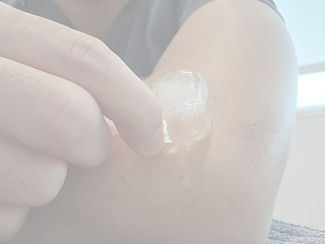

Heat or Cold?
The application of heat and cold modalities has long been integral to physical therapy and rehabilitation. These modalities, known as thermotherapy (heat) and cryotherapy (cold), play a crucial role in managing pain, reducing inflammation, and promoting tissue healing. We shall explore the therapeutic benefits of heat and cold modalities, their physiological effects, and evidence supporting their use.
Physiological Effects of Heat: Heat therapy, applied through various methods such as hot packs, warm compresses, or warm water immersion, induces several physiological responses in the body. One primary effect is vasodilation, leading to increased blood flow to the treated area. This heightened blood circulation facilitates the delivery of oxygen and nutrients, promoting tissue healing and reducing muscle stiffness. Heat also helps in relaxing muscles and alleviating pain by diminishing muscle spasms.
Physiological Effects of Cold: On the contrary, cold therapy involves the application of cold packs, ice massage, or cold water immersion. Cold causes vasoconstriction, reducing blood flow and decreasing tissue metabolism. This constriction helps manage acute inflammation by limiting the influx of inflammatory mediators. Cold therapy is particularly effective in the early stages of injury, providing analgesia by numbing the affected area and reducing pain perception.
Applications in Rehabilitation:
-
Acute Injuries:
-
Heat: Usually not applied during acute stage of injuries due to its mechanism of increased vasodilation and increase blood flow to site of injury. This might increase the inflammation response.
-
Cold: For acute injuries, especially those involving swelling and inflammation, cold therapy is the initial modality of choice. It helps control edema and reduces pain associated with the injury.
-
-
Chronic Conditions:
-
Heat: Chronic musculoskeletal conditions, such as arthritis or persistent muscle tightness, often respond well to heat therapy. Heat increases the extensibility of collagen tissues, allowing for improved flexibility and reduced stiffness.
-
Cold: Cold modalities can still be beneficial in managing chronic conditions, especially when there's an acute exacerbation of symptoms. Cold applications help control inflammation and provide pain relief.
-
Evidence-Based Support:
Numerous studies support the efficacy of heat and cold modalities in various clinical scenarios. For instance:
-
Hartzell et at. (2012) gave an update review on use of therapeutic modalities for hand surgeons based on available evidence.
-
The systematic review by Bleakley et al. (2006) highlighted the benefits of cryotherapy in reducing pain and swelling after acute musculoskeletal injuries.
Considerations and Precautions:
While heat and cold modalities offer therapeutic advantages, their application should be considered with caution. Patient factors such as skin sensitivity, circulatory disorders, or sensory deficits must be taken into account. It's crucial to adhere to recommended treatment durations and monitor patients closely for adverse reactions.
Conclusion:
The judicious use of heat and cold modalities is a cornerstone in the rehabilitation toolkit. Their application, guided by the principles of thermotherapy and cryotherapy, can significantly contribute to pain management, inflammation control, and tissue healing. As with any therapeutic interventions, our therapists at CARe are highly skilled and experienced in applying individualized therapeutic modalities to meet our patient's specific condition and needs.
References:
-
Hartzell, T.L., Rubinstein, R., Herman, M. (2012) Therapeutic Modalities - An updated review for the hand surgeons. Journal of Hand Surgery. 37A: 597-621.
-
Bleakley C.M., McDonough, S.M., MacAuley, D.C., Bjordal, J. (2006) Cryotherapy for acute ankle sprains: a randomised controlled study of two different icing protocols. British Journal of Sports Medicine, 40(8): 700–5.
-
Nadler, S.F., Weingand, K., Kruse, R.J. (2004) The physiologic basis and clinical applications of cryotherapy and thermotherapy for the pain practitioner. Pain Physician. 7: 395-399.
